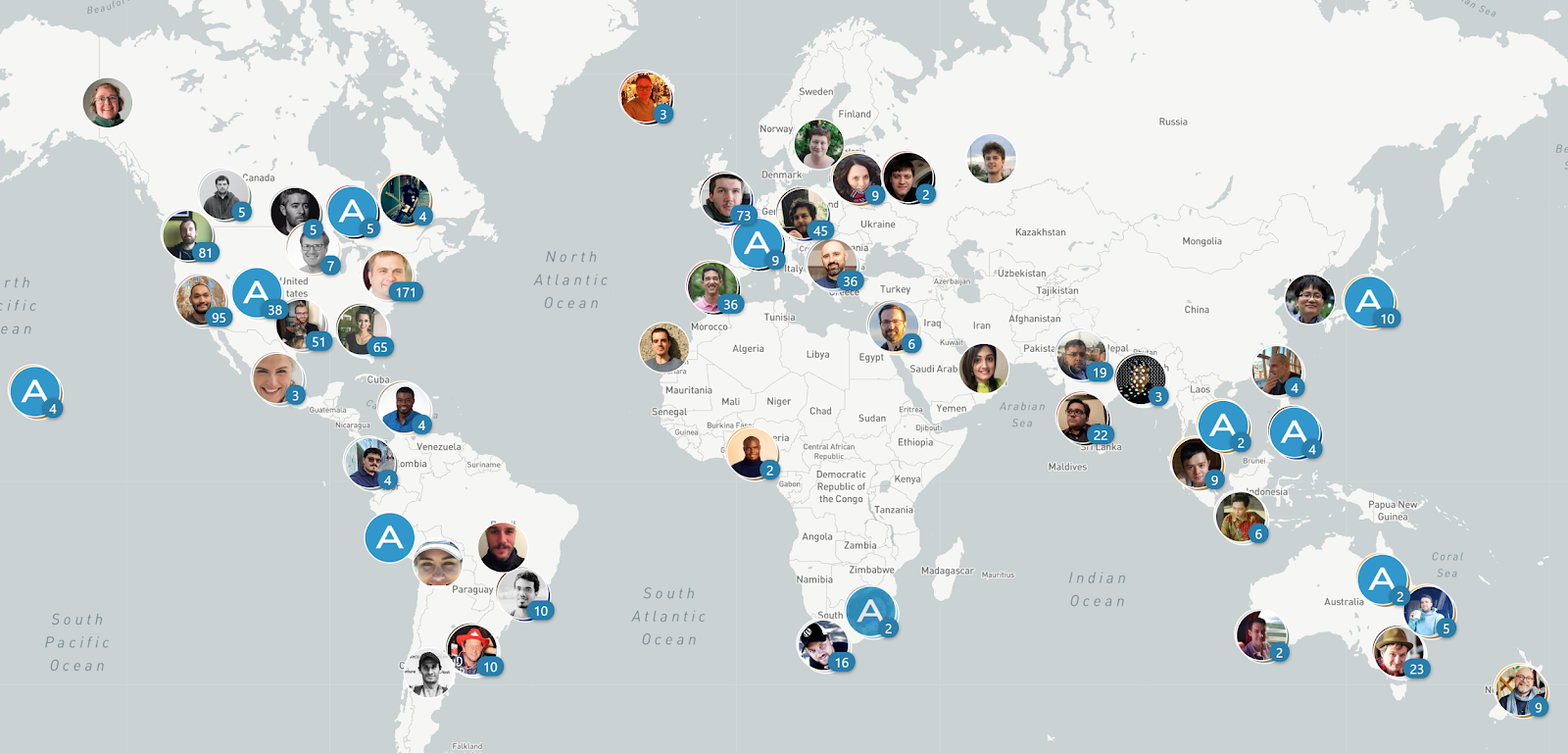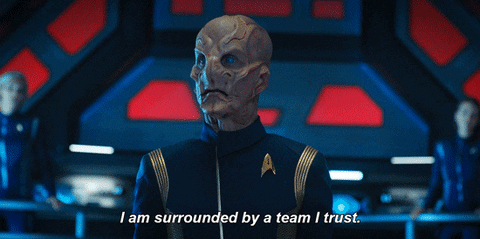In this article we are going to show you what high performing collaboration looks like.
Specifically:
You are going to learn about the five research-backed elements that have helped marketing teams worldwide — from independent stores to billion-dollar remote companies — achieve it.
So, no matter your team’s size or location, you will be able to put systems in place to ensure you have a high performing team that is:
- Motivated
- Productive
- Collaborative
Let’s take a closer look, shall we?

Manage all your social media accounts in one place.
Craft, schedule, & auto-post content to all your social channels, then track analytics and manage interactions from a single, easy-to-use dashboard.
Quick Definition: What Is “High Performing Collaboration”?
High performing collaboration is when a team can focus on a common goal and work productively to deliver superior results.
This type of collaboration stems from having the correct:
- Psychology
- Environment
- Leaders
- Goals
- Tools
In your workplace, regardless of whether the work happens online or offline. (We will cover each of these topics later in this article!)
High performing collaboration can be found everywhere. But, in this article, we want to focus on how this can benefit your marketing team.
Let’s start with a real-world example from one of the world’s most successful remote teams.
How Automattic Runs A Billion-Dollar Company Completely Online
Automattic is a software giant that you have probably never heard of. But, you interact with and use their products every single day (including on this blog).
They created:
- WordPress
- WooCommerce
- Askimet
- Gravatar
When you combine their services, they are the fourth most visited set of websites on the internet behind only Google, Facebook, and Amazon.
Now, you would probably be inclined to think of them as a Silicon Valley behemoth. You know, with a space-age headquarters and more people than most European cities.
But:
They have achieved their high levels of success with just 934+ employees working on remote teams across 70 different countries:

This means a few crazy things are true:
- Most of their employees do not speak the same mother tongue
- Few are in the same time zone (never mind the same city!)
- Employees rarely meet in person
Yet they have still been able to grow a business that is valued at over $1.6 billion and services over 150 million unique visitors a month.
Now, you might be thinking, “this is a big company, what does this have to do with my marketing team?”. And, that is a good question. Think of it this way:
Their entire marketing has been able to help this company connect with millions of customers and users despite being scattered all across the world.
How do they do it?
By cultivating an (online) environment where high performing collaboration can take place.
In the next sections, we will look at each of the foundational pieces you need to create a similar environment — both online and offline — and get the most out of your teams.
The 5 Key Elements Of High Performing Collaboration
There are five key elements of high performing collaboration for your marketing team needs to have.
They are:
- Psychological safety: the foundational element of all collaboration
- Collaborative workspaces: creating productive collisions both online and off
- Inclusive leadership: people who care in positions of power
- Goal setting: demanding tasks to focus and motivate your team
- Tools of the trade: providing the right materials to foster collaboration
Let’s take a closer look at each of them.
Element #1: Psychological Safety
The first element of high performing collaboration is psychological safety.
This means creating a working environment that ensures team members feel they can:
- Share opinions
- Contribute ideas
- Make mistakes
- Take risks
With the full support of the people around them.
Basically, when working on a collaborative project, they do not need to worry about feeling embarrassed or being made an example of because they said or did something “wrong.”
When Google analyzed their most effective teams, they observed their most productive teams shared five key traits:
- Psychological safety
- Dependability
- Structure and clarity
- Meaning
- Impact
But, most importantly, they found that without psychological safety, it was not possible for the other four traits to exists. Here is what they had to say in their findings:
“Psychological safety was far and away the most important of the five dynamics we found — it is the underpinning of the other four […] Individuals on teams with higher psychological safety are less likely to leave Google, they are more likely to harness the power of diverse ideas from their teammates, they bring in more revenue, and they are rated as effective twice as often by executives”
Psychological safety, then, is the emotional underpinning of any high-performing team. In many ways, it is an expression of trust in those around them.

When you think about this in a collaborative environment it makes a lot of sense; collaboration requires people to take risks and share their thoughts, opinions, and work with others:
- If they feel safe, they will contribute more and take more risks
- If they do not feel safe, they will contribute less and take fewer risks
We both know which of these will be the most conducive for high-performing collaboration.
However, research shows that you do not need to transform your workplace into a soft-spoken utopia to reap the benefits of this. In fact, psychological safety thrives in conflict.
When team members can both:
- Contribute ideas
- Challenge others’ ideas
It can promote productive disagreement that benefits everyone in the team.
How you foster psychological safety will depend on several factors. But, as a starting point, you could look to:
- Hold meetings to openly discuss risks and mistakes
- Create an environment where people can admit they were wrong
- Respond positively to questions, doubts, and failed-attempts
- Employ team-building exercises
- Allow teams the space to develop their own ideas and solutions
Element #2: Collaborative Workspaces
Collaboration thrives in environments where people can connect, communicate, and create. This applies to both the online and offline world. Let’s take a look at both of them.
Offline Collaborative Environments
Collaborative environments in the offline workplace often come in the form of:
- Open-place offices
- Hotdesking
- Community spaces
These are constellations that promote interactions that are often referred to as collisions:

Okay, not that kind of collision.
We are talking about the kind where people bump into each other and start to interact. Humans are predictable in that, if you put them in close enough proximity, they will begin to talk.
Research from Quartz at Work found that open-office style layouts can be really conducive to both collaboration and productivity.
They found employees:
- Collaborated at a higher frequency
- Collaborated with external teams 54% more often
- Maintained high levels of focus on their work
Analysis and research performed by the Harvard Business Review also saw the benefits of these open-office workspaces, writing, “Chance encounters and interactions between knowledge workers improve performance.”
But both of these pieces acknowledge that this comes with a caveat; the office constellation you choose needs to fit the ethos and requirements of your marketing team:
“We have also learned that spaces can even be designed to produce specific performance outcomes—productivity in one space, say, and increased innovation in another, or both in the same space but at different times.”
This means you will need to experiment with different settings, regularly review, and look at the data produced for the last period.
Simply put:
You cannot just copy and paste an open-office workplace; you need to custom build it for your people, in the way that they will get the most benefit.
Online Collaborative Workplaces
Online workplaces require a little more focused effort to turn into collaborative environments.
Remote teams, or those made up of freelancers, are at a disadvantage when it comes to building rapport between employees and promoting collaboration.
But, there are plenty of things you can do to ensure team members get the collisions and contact they need to achieve high performing collaboration.
InVision is a software company that, like Automattic, runs their entire business remotely with 700+ employees spread out across the world.
They say that they help to overcome this problem by first imploring their team members to:
- Approach interactions with empathy
- Ask lots of questions of each other
This helps to build a sense of caring and interest in one another’s lives and well-being in their online workplace.
You can also promote interactions between people by:
- Creating “chat spaces” for remote employees
- Ensuring calls are video-based
- Encouraging employees to meet up
- Hosting annual face-to-face events
This focus on empathy and connection is doubly important when your team has a mix of office- and remote-based employees.
Surveys suggest that remote workers often feel “shunned and left out” by their office-based counterparts. So, bringing people together in online environments is vital.
Later in this article, we will look at the tools you can use to foster this connection and bring people both virtually and physically closer together.
But for now, remember that the more you can bring people to interact with each other, the more likely they are to collaborate and bounce ideas off one another.
Element #3: Inclusive Leaders Who Care
Leaders play a vital role in high performing collaboration.
The better they understand the needs of the team, the more they can foster collaboration, productivity, and performance.
When we asked Loomly employees what makes a happy team , many shared the same sentiment; their leaders have a direct impact on:
- Morale
- Motivation
- Psychological safety
- Willingness to collaborate
Meilani, our Customer Success Manager, said
“The encouragement and support of a team leader, with proper guidance and mentorship, can make or break a role. A team leader who helps you professionally and teaches you new things is very important.”
Research also suggests inclusive leaders support the most creative, collaborative, and productive environments.
When analyzed teams with inclusive leaders are:
- 17% more likely to achieve “high performing” status
- 20% more likely to make high-quality decisions
- 29% more like to work and behave collaboratively
They also have 10% better attendance than other employees, which is about one day per person, per year.
But who counts as an “inclusive” leader?
Inclusive leaders are those who treat employees with respect and accept them for who they are and the needs of their work.
They ensure people — regardless of gender, sexuality, ability, or anything else — feel like they are valued contributing members of their team.
Ritu Bhasin, founder of Bhasin Consulting, does a great job of identifying many of the characteristics found in inclusive leaders in this short video:
However, it is also worth noting that leaders are not great at identifying whether they are inclusive leaders or not.
When asked to self-rate their inclusiveness:
- Highly inclusive leaders underrate their skills
- Uninclusive leaders overrate their skills
So, when trying to identify inclusive leaders for your marketing team, it may be best to rely on direct-reporting data from members of their previous teams.
Element #4: Goal Setting
The previous three elements in this list help you to create a team that is:
- Psychologically safe
- Working in a collaborative environment
- Supported by their leaders
This fourth element, then, provides purpose to the work that they are doing.
Researchers Latham and Locke looked at two types of goals:
- Easy and vague goals
- Clear and challenging goals
And found that teams who worked on clear and challenging goals were more motivated, collaborative, and delivered better results. Why?
Because specific goals create a sense of focus and demanding tasks increase employees’ enjoyment and engagement.
TinyPulse also found that when working in demanding team environments, people will go the extra mile to earn the respect and camaraderie of their teammates.

Highly performing collaboration uses these goals as its fuel; teams need to actively work toward a common goal they have ownership over to thrive.
Element #5: The Tools Of The Trade
The final element that influences high performing collaboration is tools. Basically, you need to have the right toolkit available to promote collaboration.
When teams have online spaces that enable them to:
- Communicate
- Share files
- Manage digital assets
- Create and submit work
- Track progress
- Access data
Collaboration becomes much easier in both online and offline environments.
The tools you choose will come down to personal preference. You will need to try a number of them and see how you, and your team, respond to them.
But, based on our experience working with remote marketing teams, there are a few we would like to suggest you try:
- Zoom: great for face-to-face calling and online meetings
- Front: probably the best collaborative email tool available right now
- InVision: perfect for collaborating with external product-focused and design-driven teams
- Google Docs: makes creating and sharing documents a dream
- Basecamp: excellent online “hub” for your marketing team
- Dropbox: still the best-in-class file sharing service
- Loomly: ideal for marketing workflows, asset management, and social media
How To Look For (And Measure) High Performing Collaboration
One of the trickiest parts of collaboration is answering the question:
How do I tell if my team is high performing or not?
This is a profoundly subjective question; people are unique and, when put in different constellations, will create lots of different outcomes.
What might work your marketing team may not work for others. The inverse is also true. So, how do you go about measuring and monitoring this?
This is where we find the “keep it simple” mantra to be really useful.
We recommend that you choose:
- One qualitative metric
- One quantitative metric
Ideally, these metrics will align with the current needs of your marketing team. For example, you may want to measure:
- Feedback: what does your team say about their work and their leaders? Do they feel collaborative, or do they feel stifled in their work?
- Output: how well does your marketing team deliver on their targets? Do they ensure the work gets done in an orderly timeframe? Is more or less work being completed?
- Quality: has the quality of the work gotten better or worse in comparison to previous projects?
- Growth: are your marketing team’s KPIs improving over time?
You could also benefit from making one small change at a time and monitor the resulting impact before making another change.
The key factors here are that you:
- Choose two metrics to consistently measure
- Play the long-game and make small, frequent changes
- Constantly look for feedback and results
- Adjust where necessary
Wash, rinse, and repeat until you feel you have achieved the right standard of high performing collaboration.
Final words on high-performing collaboration
High performing collaboration is when teams work together towards a clear and demanding goal and deliver exceptional results.
As you saw with Automattic and InVision, this can be achieved in both online and offline environments. But, to do so, you need to focus on these five elements:
- Psychological safety: teams need to feel supported in risk-taking and sharing
- Collaborative workspaces: teams need a dedicated space for collaboration
- Inclusive leadership: leaders should make people feel valued and respected
- Goal setting: set clear and challenging goals to focus your teams
- Tools of the trade: provide the right tools for online and offline teams to thrive
You can measure your marketing team’s rise to high performing collaboration by choosing qualitative and quantitative metrics and applying small changes over time.



